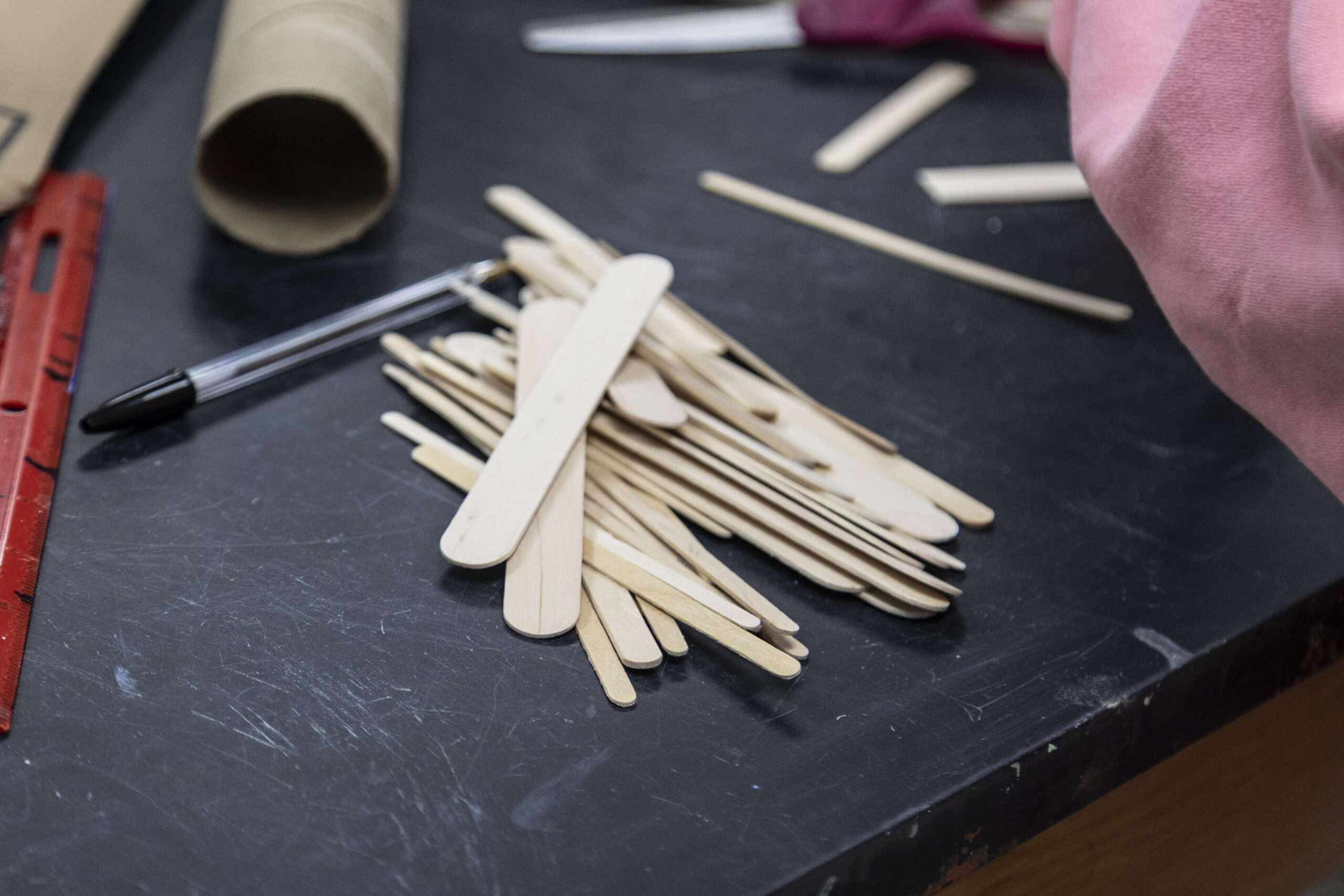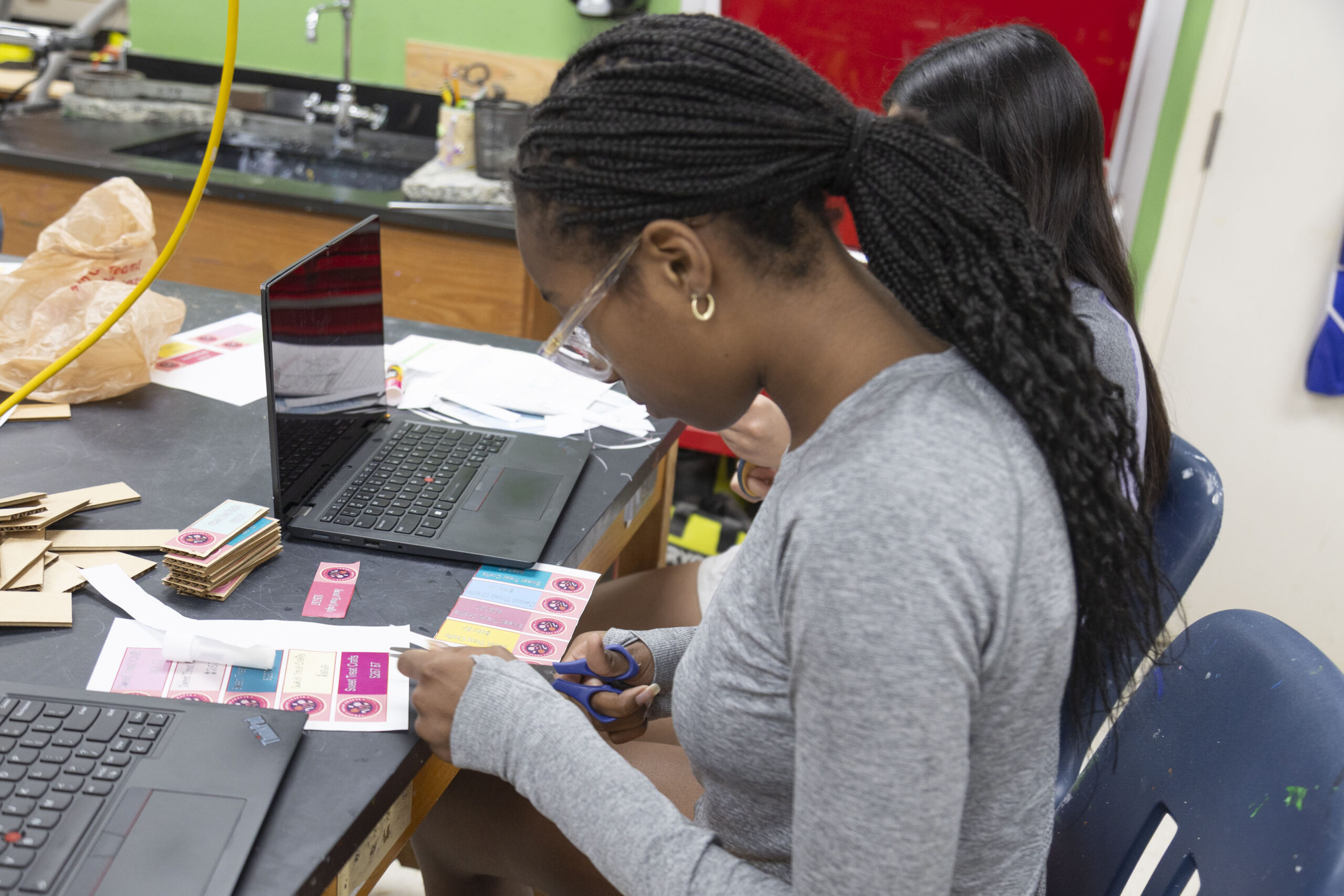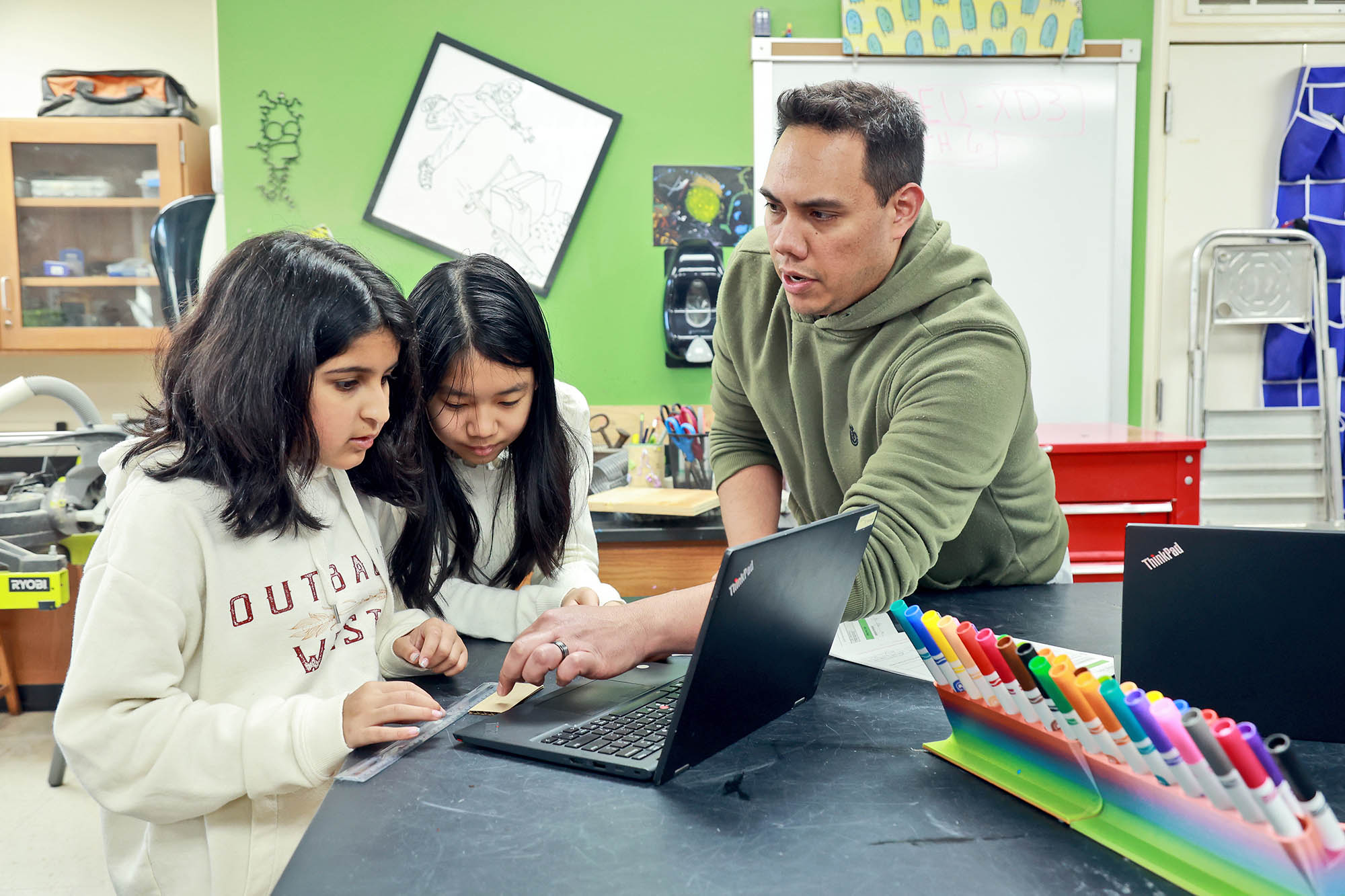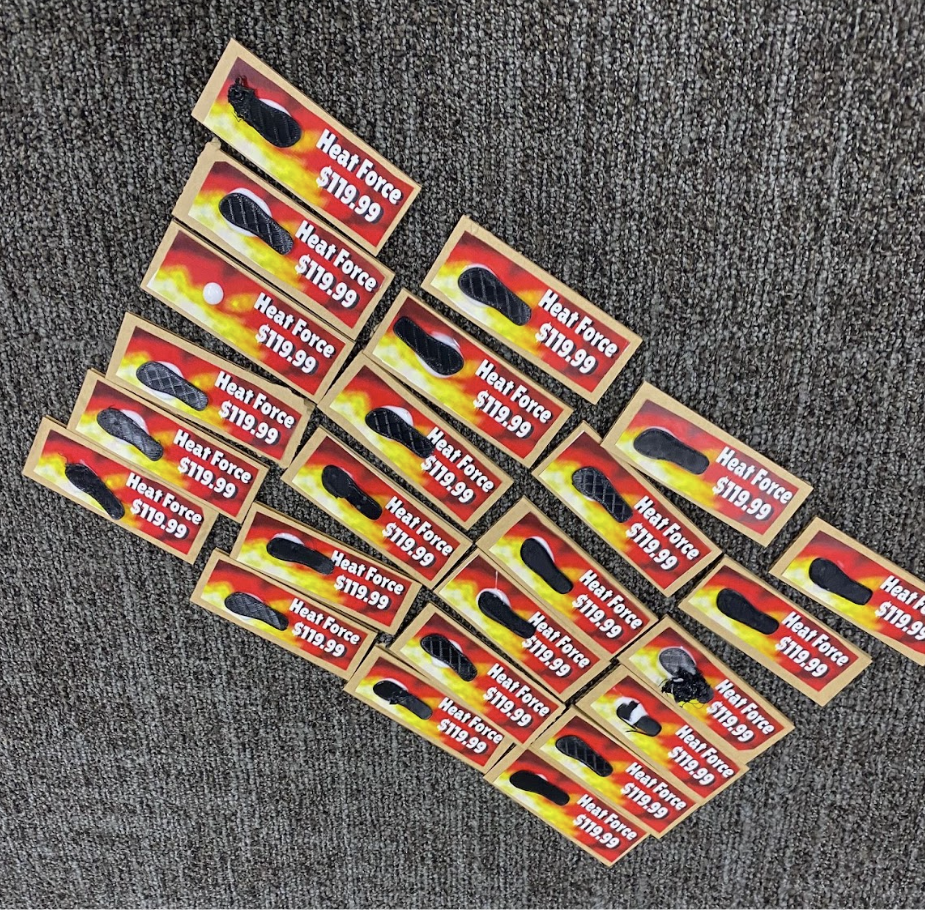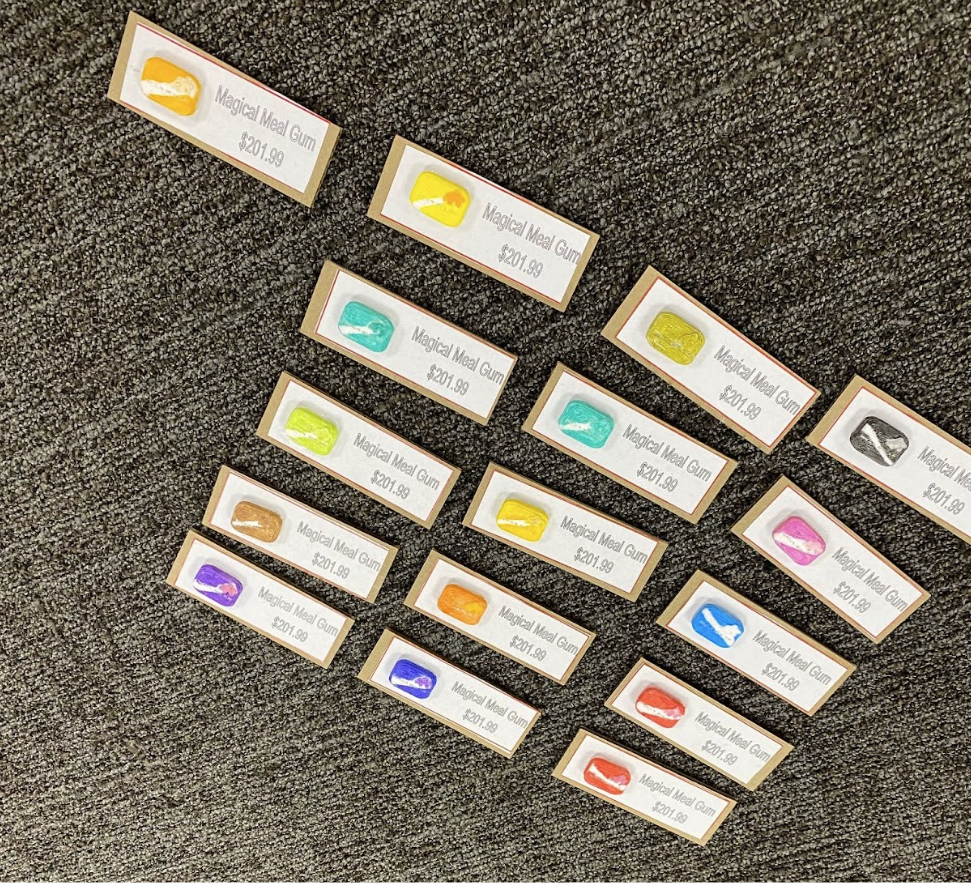By Middle School Math Teacher Dustin Delfin
After students in sixth-grade math wrapped up their Minecraft City Simulation, they’ve been busy creating their own businesses. The business project has been another tradition in sixth-grade math, where the concepts we have explored in class are connected to a real-world assignment. The project is broken into eight different phases, which took students the last nine weeks of school to complete.
Phase 1
Students were tasked with thinking of a product that they would like to create/sell, establish a company name and design a logo for their business. Below are some of the logos created.


“My partner and I sold a product called ‘Ahloe,’ which is a combination between our two names,” said Avery Selner ’31, who collaborated with Chloe Chan ’31. “We wanted to make a product just for the beach and for a nice beach day. We made hair and skin products for the perfect day at the beach.” Chan agreed. “This project was super fun to create but also included math with it!” she said. “We came up with our product by thinking of something we need when going to the beach.”
Mariam Zaid ’31 set out to solve a problem we’ve all faced. “The product I made was called Fit to Wear – I made clothes with technology that helps the clothes adjust to the person’s size,” she said. “I know that everyone hates growing out of their favorite shirt or sweatshirt, so I thought, ‘What if the person never had to grow out of their clothes?’ and decided to make Fit to Wear.”
Phase 2
Once they finalized the product they wanted to sell, each company created a brochure that advertised their product. This brochure consisted of their company name, logo, description/image of the product, and price. All brochures were compiled in a class catalog, which showcased products from all sixth-grade classes. This was used in a later phase.
By collaborating with Dr. Jody Marberry, Middle School Math Teacher, this year, we added a Shark Tank experience to kick off this project. Once the first two phases were completed, each business presented its products to the entire sixth-grade class during a class meeting. The goal of this was to A) give companies an opportunity to advertise their products to their customers (their sixth-grade peers) and B) to see if they could get Sharks to invest in their businesses. The sixth-grade advisors took on the role of Sharks, where they were asked to each select their top four products to invest in. Companies aimed to attract multiple sharks.

Phase 3
Each business partner contributed a certain amount of money from their personal bank accounts from the Minecraft Math simulation and transferred the funds into their joint business account. This stage established each company’s value. Sharks would invest a specific percentage of each company’s value, where students used percentages of a number and a scale factor to calculate that dollar amount. Once those figures were computed, the Sharks deposited their contributions into the appropriate accounts.
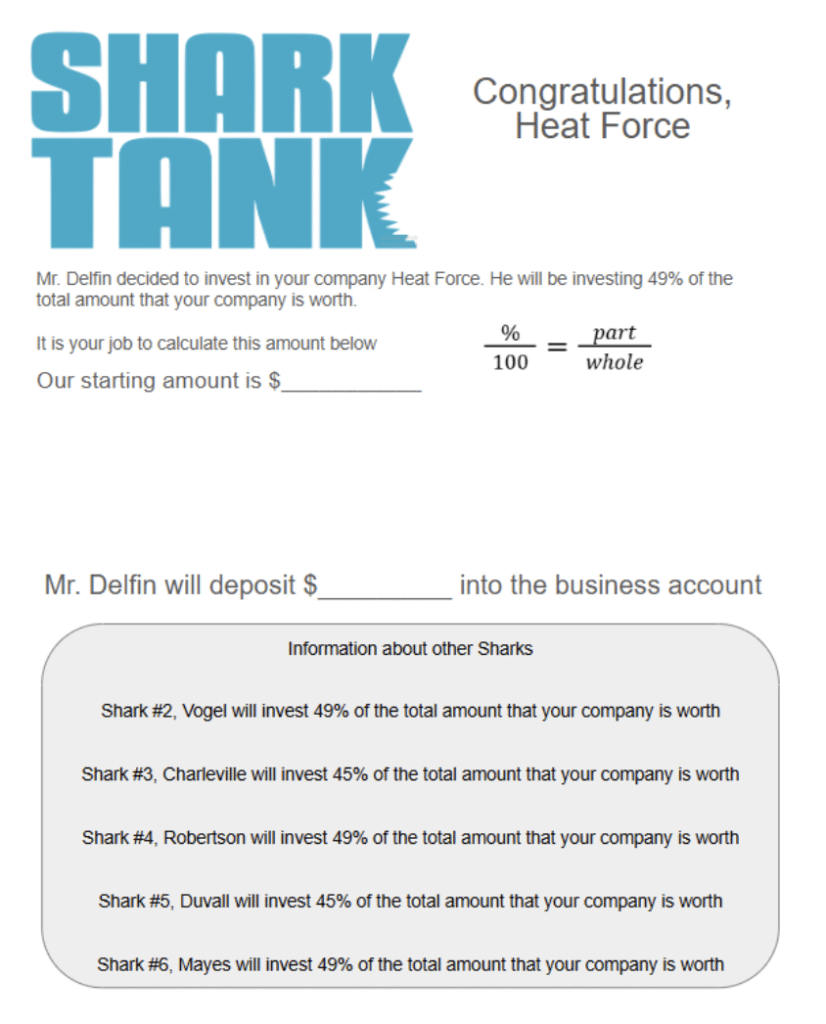
Phase 4
Once the values of each company were established, students organized their finances by selecting costs needed to run their business (legal fees, rent, utilities, and other overhead costs). Here, students relied on their skills of adding and subtracting integers and recognized how their money moved along the number line. These bills are automatically withdrawn from their company bank accounts.
Phase 5
In this phase, students visited Branson Lawrence, Middle School Science Teacher and Maker/Robotics Coordinator in the Biggs Family Makerspace, to design and build 24 of their company’s product prototypes. The mass production of items is intended to build the company’s inventory. Each company was tasked to 3-D print or use other materials in the makerspace to represent their product on cardboard cards. Companies needed to pay for the cost of materials (paint, ink, filament, cardboard cards, etc.) from their bank accounts. Students were extremely grateful for Mr. Lawrence’s support in creating their products to specific scales and utilizing his resources to finish their creations.
“My favorite part about the process would have to be building our little products!” said Selner, echoing Chan. “It was so fun making them and designing them. I loved working with my partner and the whole project overall!”
Phase 6
Once all company inventories were accounted for, the fun continued, where students were able to go shopping. Using the catalog from Phase 2 and recalling what their peers pitched at the Shark Tank presentations, students were able to participate in a mini-economy. All products were loaded onto the MyKidsBank.org Marketplace, where students were able to purchase goods from their peers. Each student was tasked with shopping for 12 items using money from their personal bank accounts and not their business accounts.
Phase 7
With digital shopping carts full, each company needed to track the inventory of their sales by documenting company profits on a spreadsheet. This documentation allowed companies to know who purchased from them and the quantity sold.
The back wall of our classroom displayed “shelves” for each sixth-grade student; each of which holds 12 items. Each company was tasked with delivering the goods to their customers’ “shelves.” This created a unique, colorful backdrop in our learning environment.
“I really enjoyed the business project,” said Zaid. “I loved how Mr. Delfin incorporated math into something like creating a business, and the business project made me look forward to class every day. My favorite part of the project was seeing how math connected with daily life, especially with operating a business.”
“The project was fun and different,” said Jimmy Pipoli ’31. “My friend and I made a watch company that tracks your stats in each sport. For example, if you’re playing football, it will track how many receptions you have and how many yards you’ve run. We came up with the idea because we both really like to play sports. Our favorite part about the project was buying products and selling our own product.”
“I think that the business project was very amazing,” added Bajro Cirkic ’31, who partnered with Isaac Mba ’31. “It helped the students get a better understanding of what it is to be an adult and the struggles and benefits of being an adult. It helps us get a better understanding because to make money, you have to work hard. Isaac and I made a product called The Game Changers. Our product is a basketball that comes with a remote, the remote can only control how far the basketball goes. We decided to do this because shooting good left to right is a skill, but strength will come as you get older. The ball can also track your stats! Also, the ball and remote take one hour to fully charge, and they last for up to 24 hours! I came up with this product because basketball is my favorite sport, and I practice every day. I also want to make the NBA. However, the great thing that Mr. Delfin did was that he let us come up with any product that we were passionate about! My favorite parts were figuring out how much money we made in sales and making our houses.”
Phase 8
The last phase is the heaviest with math applications. Each company tracked the amount of sales made, determined their company profit by budgeting their monthly finances and costs to make their mass products. It was assumed that monthly sales of the product would remain consistent to illustrate linear modeling. Students used the data to generate linear equations and function tables specific to each business account. These math concepts allowed each company to extrapolate fiscal performance over time. Companies whose businesses made a profit were asked to calculate how long it would take them to become millionaires, while the companies that were not making a profit calculated how long it would take them to be in debt one million dollars.
I love facilitating this project year after year to see how it evolves. Working with Dr. Marberry this year enhanced it even further through her Shark Tank recommendations and getting the whole sixth-grade community involved. Mr. Lawrence’s contributions to this project helped bring our mini-economy to life. It is interesting to see how student personalities begin to emerge in our learning environment as the project allows them to express their creativity and individuality. Yet, it also provides them with opportunities to use skills covered in class and connect them with real-world situations.


























































